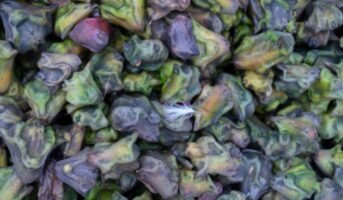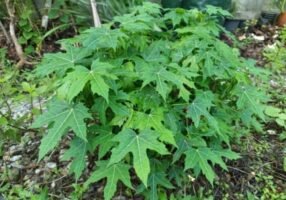The Citrinae plant species, commonly known as Citrina, is a miniature citrus plant that can be both a decorative houseplant and a crop plant for your house as well. It bears a miniature orange-like fruit that has a taste and texture similar to that of an orange, as well as its appearance.
Native to Portugal, these plants are moderate growers and don’t take up a lot of space and are sustainable and climate-friendly as well. Annually, over 1.5 million Citrinae and their fruit are purchased in more than 32 countries. There’s not a lot of information about this plant species as a whole due to the fact that it has been discovered very recently and is grown like a typical orange plant only.
Other than Citrinea, there are several other plant species belonging to the citrus family, which are grown, cultivated and consumed year-round all around the world.
The citrus family’s plants bear fruit with bright yellow, orange or green coloured skin and have a pulpy, fluid-filled flesh with a taste ranging from sweet to sour depending on the fruit. These plants also have a very strong scent that is used as a fragrance in many commodities.

Source: Pinterest
See also: All about Areca Palm
Citrinae: Quick facts about the Citrina family
| Botanical name | Rutaceae |
| Mature size | Height- 4-20 ft. on average
Width- 2-16 ft. on average |
| Sun exposure | High-full |
| Soil type | Well drained, fertile |
| Soil pH | Neutral or slightly acidic, depending on the plant |
| Bloom time | Summer, winter, spring |
| Native area | Asia, parts of America |
| Toxicity | toxic to canines and felines |
Citrinae: Types of citrus plants
Citrus plants have an expansive list of varieties, which are mostly cultivated for fruits, the most common being lemon, sweet lime, oranges, tangerines, all of which were derived from the original four citrus fruits, namely pomelo, mandarin, citron and papeda. In the last few hundred years, people have bred and grown different cultivars to suit their tastes and their use case. The most popular cultivars are:
-
Grapefruit (citrus x paradisi):

Source: Pinterest
The grapefruit, which originated from the citron family, is a cultivar native to the Caribbean and can be explained as a cross between a sweet orange and a pomelo. It is one of the most significant fruits of Caribbean culture and is used quite abundantly in western countries. Grapefruit trees have long, glossy, dark-green leaves with white flowers.
-
Orange (Citrus sinensis):

Source: Pinterest
The most popular cultivar of the citrus family, it is a fruit so important that it has become a standard household staple that can be found in almost every single household. It is native to Asia but grows in almost every part of the world.
-
Lemon (citrus lemon):

Source: Pinterest
Another popular variant of the citrus plant, lemon fruits are used as a household staple and have a ton of uses. It is mainly used for adding flavour, as a fruit, garnish, fragrance ingredient, and so much more. The list is endless. The lemon fruit is bright yellow and has been a cultivar believed to have originated in Asia.
Citrinae: Growing and caring for a citrus plant
Citrus plants are easy to grow, and most of the variants will be effortless to care for if you’re careful enough. Please note that while most of the subspecies in the citrus family have similar growing methods, there are a few exceptions that may have different methods of growing and caring for. Please do your research thoroughly.
Most of the cultivars are grown using methods similar to each other and don’t require a lot of looking after.
Citrus plants, as a whole, love sunshine and want as much light as possible. If you’re growing one, plant it indoors near east or north-facing windows for an adequate amount of light. Be sure to keep the plant away from frost or wind.
They require medium-textured soil that has plenty of drainage and moderate depth. The soil pH should be slightly acidic, and mulching should be avoided at all costs.
Water is one factor that is crucial for a successful harvesting session. Frequently water it when the plant nears establishment. During the summer months, keep the soil moist but not soggy. Keep the plant at a temperature between 75-85 degrees Fahrenheit.
Citrus fruits are fertiliser hungry, meaning they absolutely need an NPK fertiliser to make sure the plant thrives and to promote fruit production.

Source: Pinterest
Citrinae: Uses and benefits of the citrus plant family
There are numerous benefits of eating or consuming any sort of citrus plant. These plants are heavily dosed with vitamin C, fibre and antioxidants that help in medicinal aid such as repairing cells, heart health, cough, kidney stones, weight loss, and the list goes on.
Other than medicinal uses, it is also used as a constituent in fragrances, cleaning agents, garnishes and whatnot.
FAQs
When should citrus plants or trees be pruned?
Generally, citrus plants don’t need any sort of necessary pruning. For certain varieties, the removal of deadwood and weak shoots is the only thing that’d be required.
Do citrus plants need cross-pollination?
For cultivars like mandarin oranges and tangelos, cross-pollination is vital for healthy fruit production.
Should citrus plant fruits be left after maturing?
Fruits belonging to the citrus family are primarily grown and cultivated to be consumed. Leaving the fruit after maturing may contribute to a small crop and even drop more fruit for the next crop.
Housing News Desk is the news desk of leading online real estate portal, Housing.com. Housing News Desk focuses on a variety of topics such as real estate laws, taxes, current news, property trends, home loans, rentals, décor, green homes, home improvement, etc. The main objective of the news desk, is to cover the real estate sector from the perspective of providing information that is useful to the end-user.
Facebook: https://www.facebook.com/housing.com/
Twitter: https://twitter.com/Housing
Email: editor@housing.com











